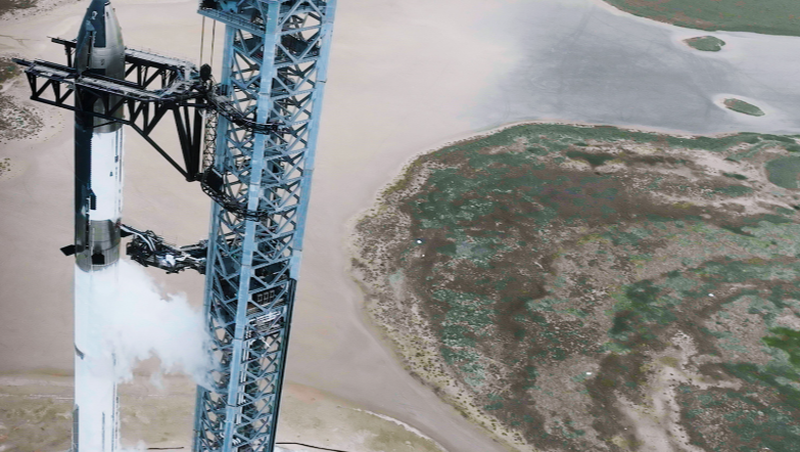The explosion of Starship in November last year led to a huge hole in the ionosphere


The explosions of the first stage of the SpaceX Starship rocket and its main module, which occurred after the launch in November last year at an altitude of about 90 and 149 km, respectively, led to the appearance of a huge plasma hole in the ionosphere, TASS writes, citing materials from a study published by the SB RAS “Science” in Siberia.”


Image source: SpaceX
The hole spread over thousands of kilometers, stretching over a region from the Yucatan Peninsula in Mexico to the southeastern United States, and persisted for almost an hour.
«An international team of researchers with the participation of specialists from the Institute of Solar-Terrestrial Physics SB RAS (Irkutsk) found unusual consequences in the ionosphere as a result of the explosion of the super-heavy spacecraft Starship on November 18, 2023,” reported the SB RAS publication “Science in Siberia.”
Co-author of the study Yuri Yasyukevich, leading researcher at ISTP SB RAS, Doctor of Physical and Mathematical Sciences, says that the scale of the disturbance in the ionosphere came as a surprise to scientists. “This means that we do not understand the processes occurring in the atmosphere,” the scientific journal Nature quotes him as saying.
Yasyukevich also noted that this is the first case of detection of a non-chemical plasma hole formed as a result of a man-made explosion. “Usually such holes are formed as a result of chemical processes in the ionosphere due to interaction with engine fuel,” he explained, adding that the study of such phenomena allows us to better understand the structure of the ionosphere and the nature of the phenomena that occur in it.
In turn, Kosuke Heki, a geophysicist from Hokkaido University in Sapporo (Japan), said that the hole in the ionosphere due to the Starship explosion is smaller in size than the hole that was formed as a result of the Tonga volcano eruption in early 2022, although and surpassed the one formed as a result of a meteorite fall near Chelyabinsk in 2013 – the largest in a century.
Ionospheric disturbances can cause disruption to satellite navigation, which could affect the performance of future autonomous vehicles, as well as impact communications and radio astronomy. As the frequency of launches increases, these effects could become a more serious problem, the journal Nature noted.
Recent Posts
Yandex Introduces NeuroExpert, an AI That Will Collect a Knowledge Base of User Links and Files
Yandex has introduced the Neuroexpert service, which is available in beta version. It allows you…
- Mobile phones, smartphones, cellular communications, communicators, PDAs
- Technology and IT market. news
Poco M7 Pro 5G smartphone with Dimensity 7025-Ultra chip goes on sale globally
Xiaomi has announced the start of global sales of the Poco M7 Pro 5G smartphone,…
‘Worse than my worst nightmare’: Leaked gameplay from testing the new The Sims horrified fans
Electronic Arts has changed its mind about releasing The Sims 5, instead deciding to focus…
Samsung sharply increases chip shipments to China, while sanctions do not interfere
Samsung Electronics' problems with Nvidia's HBM3E memory supply contracts often make the news, but how…
Western Digital Releases 26TB Purple Pro Series HDD for Video Surveillance Systems
Western Digital has expanded its Purple Pro family of hard drives for intelligent video surveillance…
- Servers, clusters, supercomputers, industrial and multiprocessor computers
- Technology and IT market. news
Chinese companies ordered $16 billion worth of Nvidia accelerators last quarter
The Chinese market remains important to Nvidia even as tighter U.S. export controls prevent the…